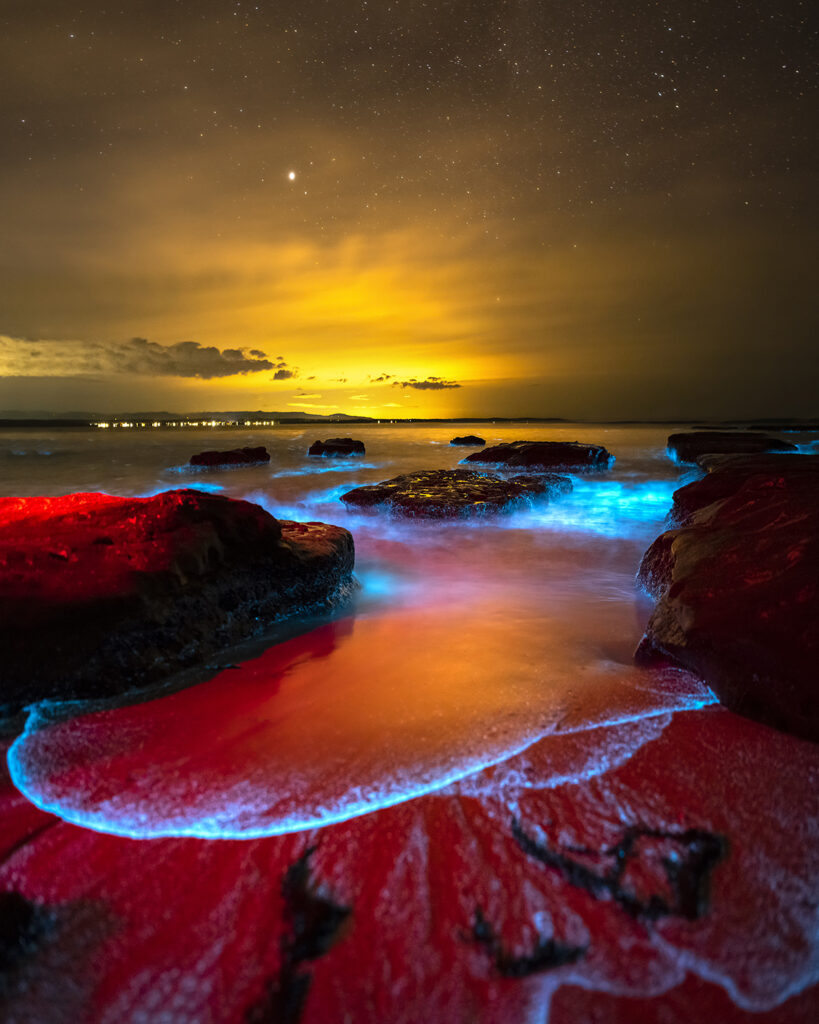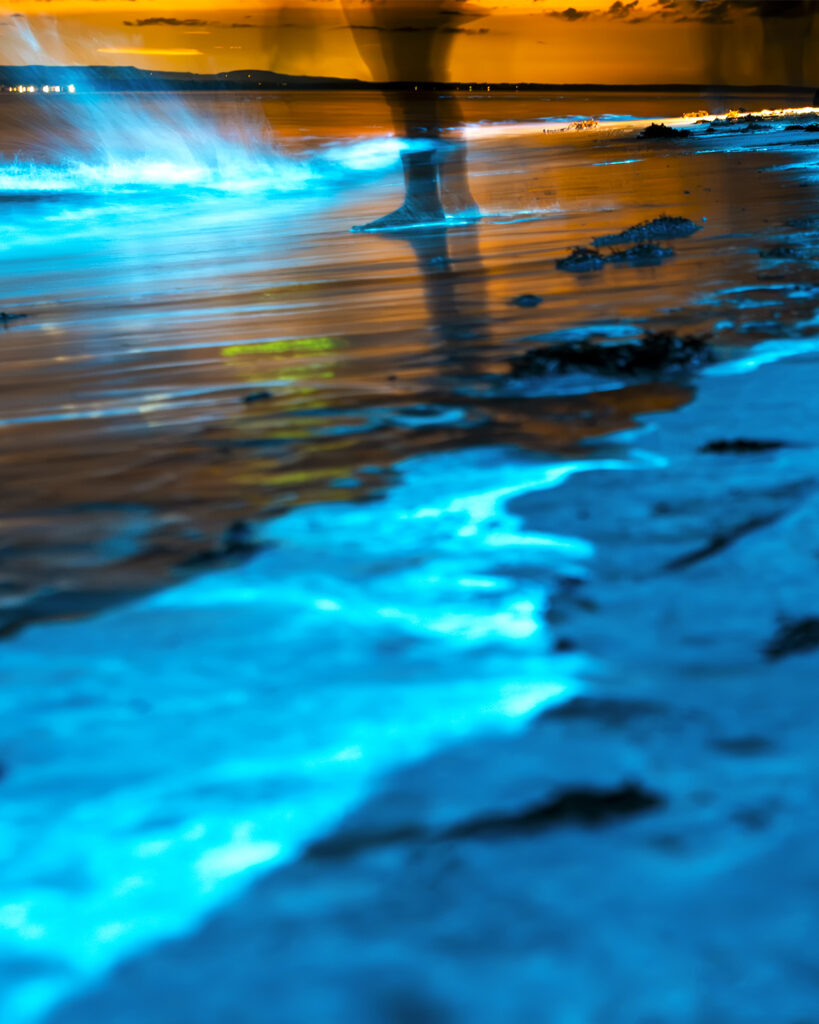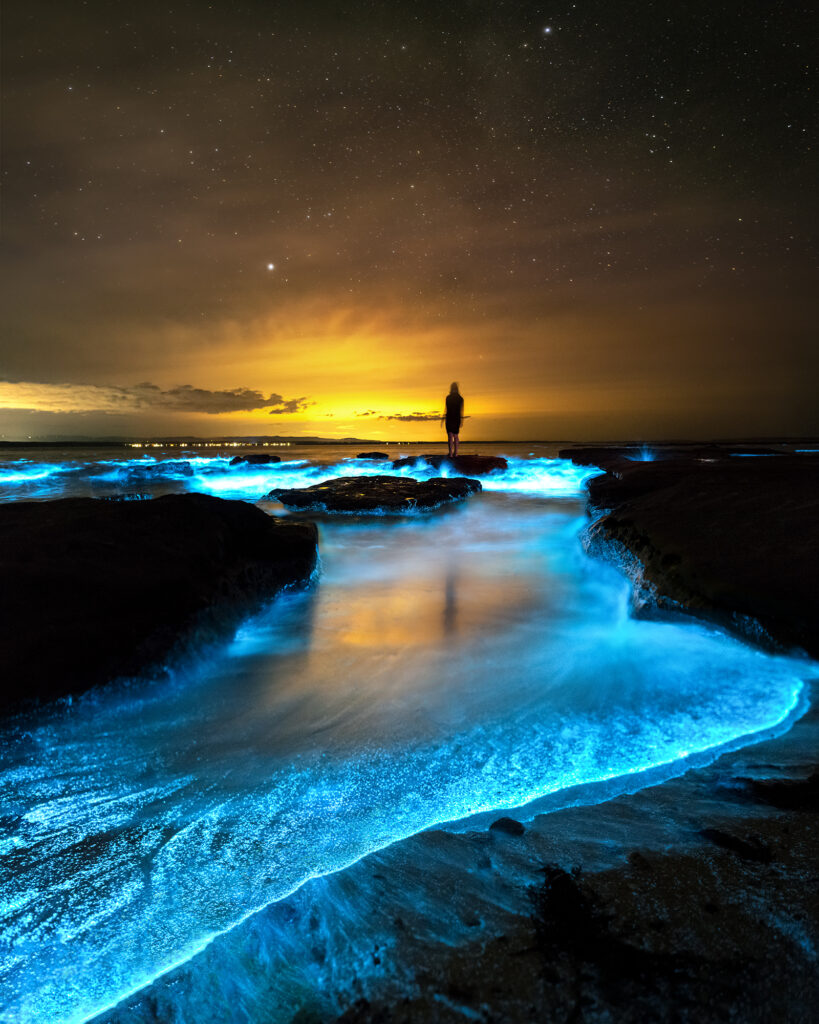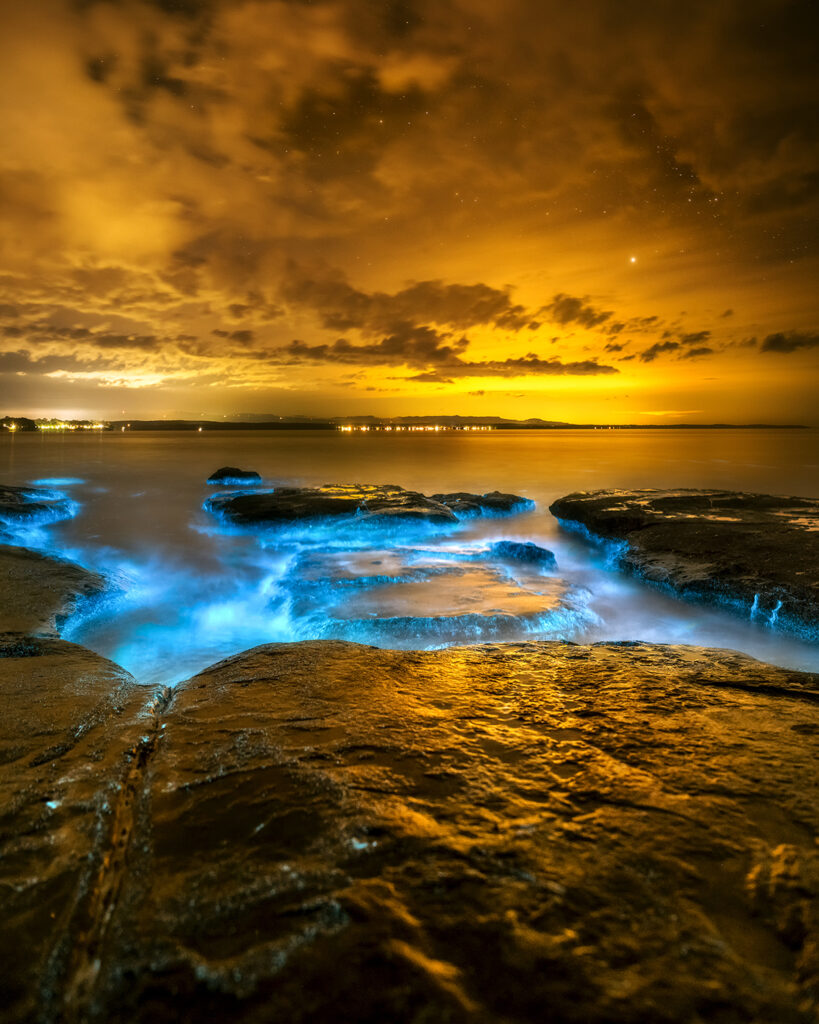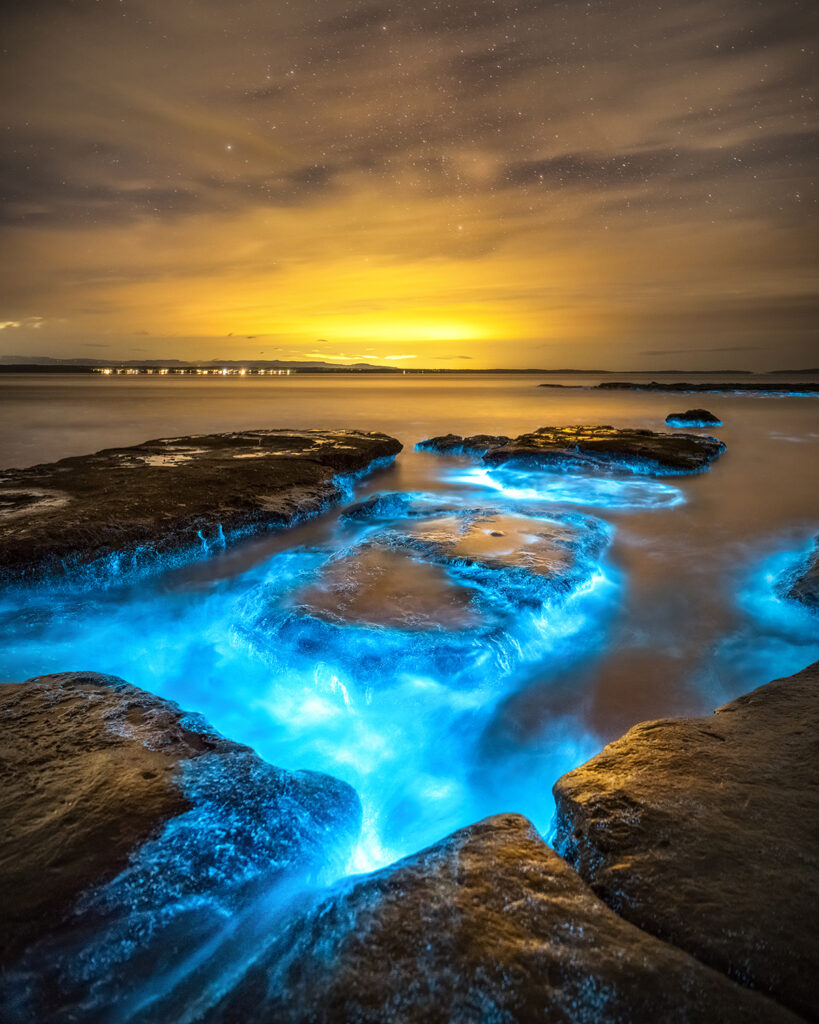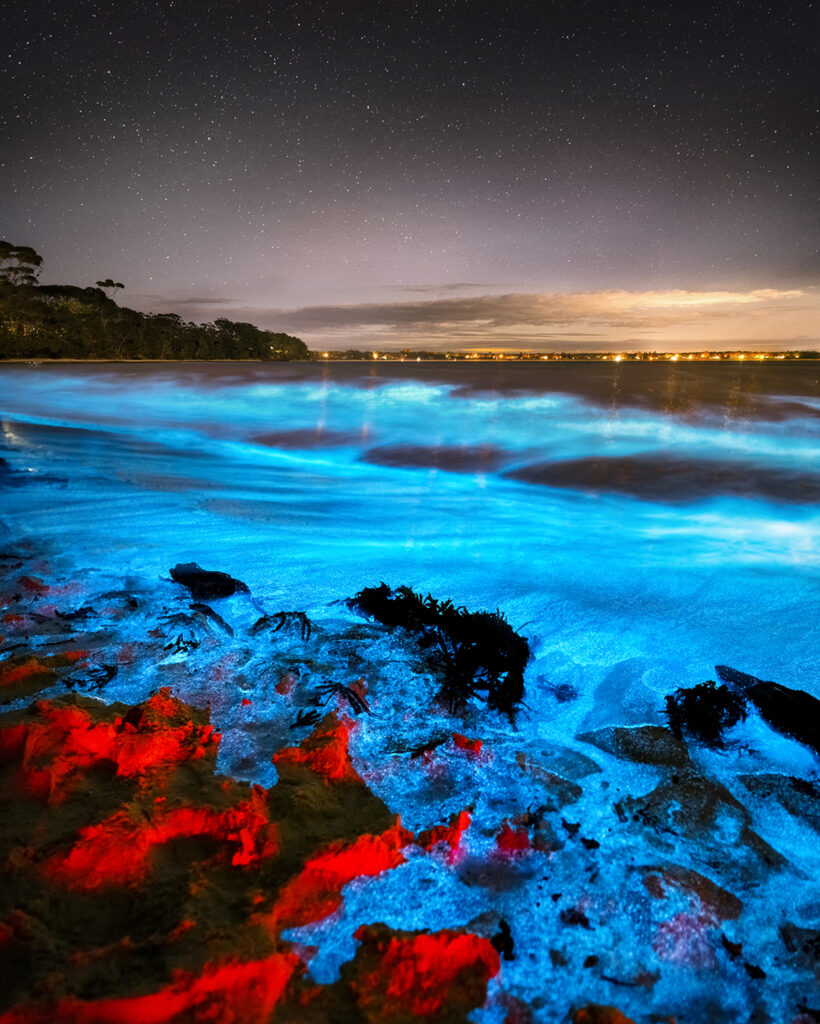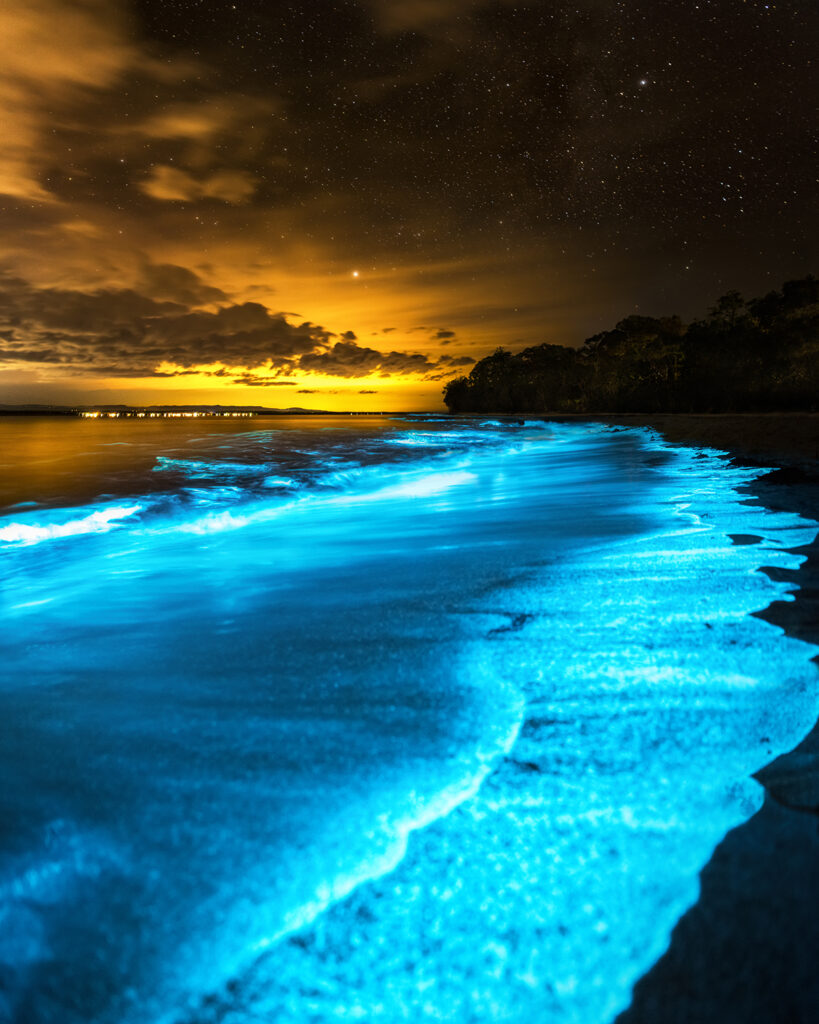Bioluminescence is one of nature’s most breathtaking light shows. Caused by living organisms that emit light when disturbed, it’s a form of chemiluminescence. This spectacle occurs widely among marine creatures, but the most commonly seen light producers are microscopic algae called dinoflagellates.
When large numbers of these algae accumulate, they can form what’s known as a Red Tide, visible during the day as discoloured patches in the water. But the real magic unfolds at night. These organisms are controlled by an internal body clock, so even in total darkness, they won’t glow during daylight hours. Once the sun sets, any movement in the water – a wave, a splash, a step – can trigger a burst of glowing blue.
Finding bioluminescence is a challenge. Its appearance is rare, unpredictable, and can vanish quickly with a change in wind. The blooms typically last only a couple of days. The best way to catch it is by following updates from communities like the Bioluminescence Australia Facebook Page, where people share sightings in real time.
Some tips for spotting bioluminescence:
Bioluminescence doesn’t glow during the day – even in the dark – because the algae follow a natural rhythm. But during daylight hours, you might spot early signs. Look out for red tide: pinkish or reddish patches on the surface that resemble an oily sheen. These discoloured areas can hint that bioluminescent algae are present.
At night, the glow becomes visible when disturbed. People often run into the waves, splash water, or walk along the shoreline to activate the light. Some even bring buckets to toss water around. It’s incredible to watch – each splash bursts into electric blue. Generally, bioluminescence in Australia is harmless, and you can safely walk or swim through it. However, always be cautious if there are any official warnings, strong odours, or signs of harmful algal blooms. If the water looks unusual or you’re unsure, admire the glow from the shore.
In July 2020, my friend Marty, a talented photographer, called me one Saturday afternoon. He had just seen a post reporting bioluminescence in Jervis Bay. A few months earlier, we had made the same journey together, only to find that the algae weren’t concentrated enough to see. But this time, the signs were promising. We hit the road at 6 p.m. from Sydney, eager and hopeful.
After arriving, we checked several beaches. The signs were there, but the glow was still faint. Then we reached Vincentia, where dozens of people were gathered on the sand. As they walked, jumped, and kicked the water, brilliant electric-blue bursts lit up the shore. Waves glowed, footsteps shimmered, and every movement sparked light. It felt like stepping into a dream, like walking through the forest of Pandora in the movie Avatar.
Witnessing the bioluminescence was one of the most amazing experiences of my life. Being there truly felt like landing on a different planet. It’s one of those rare moments you never forget. If you ever get the chance to see it, take it in and enjoy every second. You never know if, or when, you’ll see it again.

